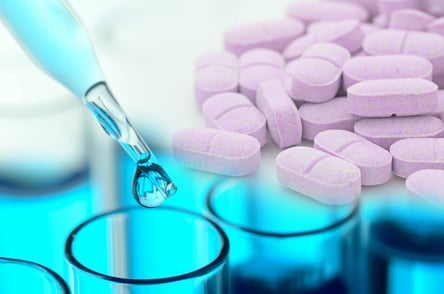Share this
how blood microsampling fits into the drug development process
by Neoteryx Microsampling on Jun 7, 2019 7:26:00 AM

There are various stages involved in drug development, which is just one part of the preclinical research process.
New drugs must undergo rigorous trials and evaluations before they get to the end user, the consumer.
Here is a Breakdown of The Stages of Drug Development:
Discovery – At this stage, scientists are involved in choosing a molecule such as a protein or gene and they must confirm that it is associated with the disease in question. After conducting multiple tests, the scientists choose the most promising drug molecules.
Preclinical research – After choosing the most promising drug molecules, scientists then begin preclinical trials. These are divided into in vitro and in vivo testing. In vitro involves observation of the drug molecules and how they interact in a lab setting. This is usually done in test tubes.
In vivo testing is testing the molecules on animals and living cell cultures. The animal testing may begin to bear visible fruits, but the test won’t move to humans until extensive research on the drug safety is performed. This stage usually takes years to confirm possible side effects of the drug molecules as well as their efficacy. The most promising molecules at the discovery stage might have numbered in the thousands; at this stage, the scientists might narrow them down to between one and five.
Investigative New Drug (IND) application filing – After those early stages of the drug development process have been completed in the United States, an IND application is submitted to the Food and Drug Administration (FDA). The FDA critically scrutinizes all aspects of the drug and decides if it’s safe for the scientists to proceed to the next stage — human clinical trials.
Clinical trials – The clinical trials stage is similar to preclinical trials; the only difference is that the clinical trials involve human beings versus animals.
How Blood Microsampling Fits into the Drug Development Process
The preferred animals for preclinical research are rats and mice. Due to the amount of blood drawn from these animals, a large number of them die. While this is obviously unfortunate for the animals, it also may affect the study results. With the use of microsampling, the amount of blood that is collected from each animals is very small. Each blood sample is micro-sized, making it a less invasive experience for the animal, and making it possible to continue a study using just one mouse that previously used three mice.
Microsampling Provides Comfort and Convenience and Can Cut Costs
In preclinical studies and clinical trials, microsampling offers comfort and convenience for the test subjects. Consequently, pharma and drug development companies don’t have to spend more budget on using satellite animal populations for their animal studies, or on the retention of study volunteers in their human-based clinical trials. This frees them to focus less on the research challenges and more on the drug development study itself.
Share this
- Microsampling (206)
- Research, Remote Research (119)
- Venipuncture Alternative (105)
- Clinical Trials, Clinical Research (83)
- Mitra® Device (73)
- Therapeutic Drug Monitoring, TDM (51)
- Dried Blood Spot, DBS (39)
- Biomonitoring, Health, Wellness (30)
- Infectious Disease, Vaccines, COVID-19 (24)
- Blood Microsampling, Serology (23)
- Omics, Multi-Omics (21)
- Decentralized Clinical Trial (DCT) (20)
- Specimen Collection (18)
- Toxicology, Doping, Drug/Alcohol Monitoring, PEth (17)
- Skin Microsampling, Microbiopsy (14)
- hemaPEN® Device (13)
- Preclinical Research, Animal Studies (12)
- Pharmaceuticals, Drug Development (9)
- Harpera Device (7)
- Industry News, Microsampling News (5)
- Antibodies, MAbs (3)
- Company Press Release, Product Press Release (3)
- Environmental Toxins, Exposures (1)
- July 2025 (1)
- May 2025 (1)
- April 2025 (2)
- December 2024 (2)
- November 2024 (1)
- October 2024 (3)
- September 2024 (1)
- June 2024 (1)
- May 2024 (1)
- April 2024 (4)
- March 2024 (1)
- February 2024 (2)
- January 2024 (4)
- December 2023 (3)
- November 2023 (3)
- October 2023 (3)
- September 2023 (3)
- July 2023 (3)
- June 2023 (2)
- April 2023 (2)
- March 2023 (2)
- February 2023 (2)
- January 2023 (3)
- December 2022 (2)
- November 2022 (3)
- October 2022 (4)
- September 2022 (3)
- August 2022 (5)
- July 2022 (2)
- June 2022 (2)
- May 2022 (4)
- April 2022 (3)
- March 2022 (3)
- February 2022 (4)
- January 2022 (5)
- December 2021 (3)
- November 2021 (5)
- October 2021 (3)
- September 2021 (3)
- August 2021 (4)
- July 2021 (4)
- June 2021 (4)
- May 2021 (4)
- April 2021 (3)
- March 2021 (5)
- February 2021 (4)
- January 2021 (4)
- December 2020 (3)
- November 2020 (5)
- October 2020 (4)
- September 2020 (3)
- August 2020 (3)
- July 2020 (6)
- June 2020 (4)
- May 2020 (4)
- April 2020 (3)
- March 2020 (6)
- February 2020 (3)
- January 2020 (4)
- December 2019 (5)
- November 2019 (4)
- October 2019 (2)
- September 2019 (4)
- August 2019 (4)
- July 2019 (3)
- June 2019 (7)
- May 2019 (6)
- April 2019 (5)
- March 2019 (6)
- February 2019 (5)
- January 2019 (8)
- December 2018 (3)
- November 2018 (4)
- October 2018 (7)
- September 2018 (6)
- August 2018 (5)
- July 2018 (8)
- June 2018 (6)
- May 2018 (5)
- April 2018 (6)
- March 2018 (4)
- February 2018 (6)
- January 2018 (4)
- December 2017 (2)
- November 2017 (3)
- October 2017 (2)
- September 2017 (4)
- August 2017 (2)
- July 2017 (4)
- June 2017 (5)
- May 2017 (6)
- April 2017 (6)
- March 2017 (5)
- February 2017 (4)
- January 2017 (1)
- July 2016 (3)
- May 2016 (1)
- April 2016 (2)



Comments (2)